25,000 Alhambra tours and counting
The lesson about family that I learned from our (VERY experienced) guide in Granada.
He called us family.
It was a strange little turn of phrase from our tour guide at the Alhambra as he gathered more than 20 of us for a scheduled visit to one of the most historic sites in Europe.
At first, I thought it was simply some cute way to corral the dawdling tourists. And I thought that he was just some tour guide.
Angel Guisado Garcia, a Granada native with a voice made for radio and a gentle sternness made for the classroom, didn’t exactly introduce himself as the most esteemed tour guide at the Alhambra, but it became clear as we wandered through the Islamic palace built in 1366 that he knew what he was doing.
And that he loved what he did.
It was about 5 p.m. last Saturday afternoon. The rain had stopped, but Angel was still wearing a yellow rain jacket as he handed out the little audio transmitters and headsets that would help him speak directly to us without having to use that booming voice.
As soon as the mic turned on, he dropped the volume of his voice to almost a whisper: “Come with me, family. Let’s start the tour.”
We walked up the long road to the entrance of the commanding medieval fortress on a hill that had once been bombed by Napoleon and fell to ruins as late as the 1800s.
Angel explained that there are two heroes of the Alhambra: José García, a disabled soldier who, in 1812, put out one of Napoleon’s lit fuses on an explosive that would have certainly destroyed some of the most majestic parts of the castle; and the American writer Washington Irving, who stayed in the Alhambra during his grand tour of Europe in 1829 and wrote a book that many, including Angel, consider to be the reason for the revitalization and preservation of the sprawling structure and gardens.
I had visited the Alhambra once before, in 2004, most memorably because I was there with my friend Troy, who died two years later.
I remembered these intricately detailed rooms, with their mosaics and carved walls, but it wasn’t until Angel’s tour that I learned so much about the meaning behind the architecture.
The darkness of the sultan’s room was meant to disarm visitors who were blinded by the sun in the whitewashed patio. The mosaics all have at least one “mistake,” a reminder of man’s inherent imperfections. The architect behind the Taj Mahal reportedly visited the Alhambra before designing one of India’s most iconic buildings several hundred years later.
“Use your imagination to picture stained glass ceilings,” he said in one of the great rooms. “As the sun rose in the east and set in the west, the stained glass would send different patterns all across the floor and the walls. And because the sun moves to a different position in the sky each day and moves slowly each minute of the day, every day, the light would have been different. Just imagine that, family.”
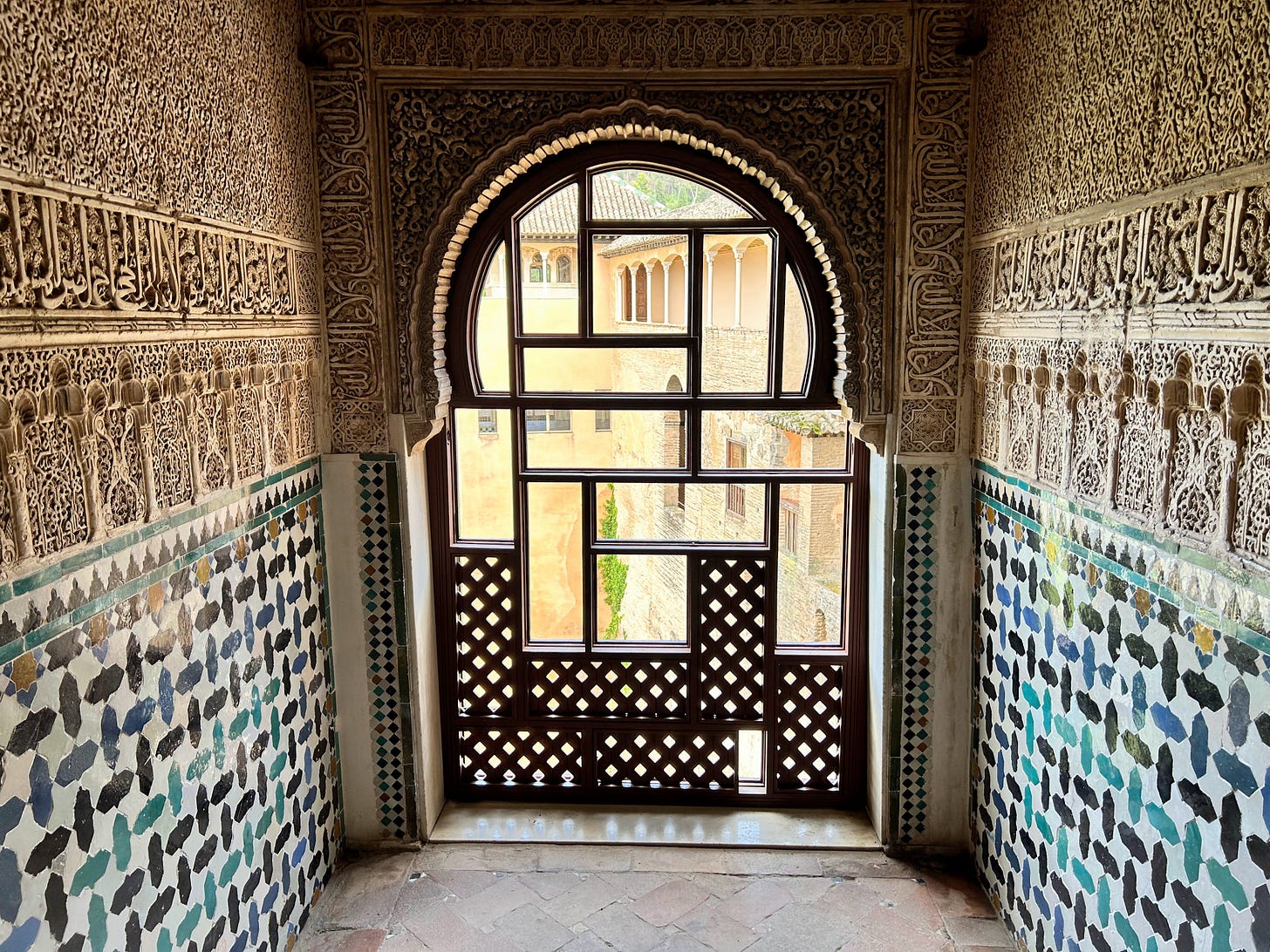
This was the second time I heard the phrase, “the light cycle,” in Spain. (The first was at the Sagrada Familia in Barcelona, another must-see, soul-stirring destination that is best seen with a guide.)
This was also when I started paying closer attention to this man leading us. As we entered each room, he greeted the guard of that room by name with a handshake and a sense that they were part of his family, too.
When one couple’s toddler started crying, Angel spoke to the boy with a few words in French and opened his arms, the international way to say, “I’ll carry you if you’ll let me.”
For the next five minutes, Angel continued the tour while carrying the child in his arms as if he were his own.
There wasn’t much down time for chit-chat, but I was able to overhear his small conversations with visitors because of the mic he was wearing. When did he start giving tours? 1992. How many tours had he given? “25,000 and counting.”
(At two or three tours a day, the math checks out.)
When we got to the Palace of the Lions, he called it “the palace of obligatory photos.”
“Take the photos, my family. You will want to remember this later.”
He explained that the twelve lions at the center of these private chambers of the royal family might have been a reference to the twelve lions surrounding the throne of King Solomon, who oversaw the 12 tribes of Israel and has been seen as Abraham reincarnate.
Abraham, the father of the three major religions — Judaism, Christianity and Islam — whose history is so palpable throughout the Alhambra and all of Andalucía.
“And one in three people are related to Abraham,” Angel said. “Which is why I call us ‘family’.”
I still don’t quite understand the connection between Abraham and the Alhambra, but I know that what Angel said is true: Despite our language differences, our geopolitical differences, our ancestral differences, we are all part of a global family made up of people, some of whom travel very long distances to see things that they might not ever truly comprehend.
Nearly 9,000 people visit the Alhambra every day. It’s a place where you have to book tickets ahead of time, and you have to stick close to your guide or you’ll get left behind.
I got to thinking about Angel and his 25,000 tours. It’s entirely possible that he was at the Alhambra the day of my visit with Troy almost 20 years ago, when we didn’t have a tour guide but dreamed of the day when we could one day afford one.
It’s a place where more history has been lost than has been preserved.
It’s a place where, thanks to this tour guide, I remembered that I am part of a family that’s bigger than my own.
It’s a place where I got to share a special day with my children and my husband, and now to share this moment with my Substack family.
It’s just all very fitting. Just like those 8017 ceiling pieces that don’t make any sense how they fit together.
But somehow they do.
If you’ve gotten this far, it’s because you’re already a paid subscriber whose support has meant the world to me over the past two years.
Thank you so much for giving me the confidence to keep writing on this platform. Because of your support, I can spend as many hours a week as I would on traditional freelancing to write one-of-a-kind stories about culture, community, history, ancestral healing and life, as seen through the generational lens.
If you haven’t already, use this form to submit your physical address so I can send your zine in the next few weeks!
Thank you!
Addie
P.S. One last (very curious) thing about our visit to the Alhambra: Angel did not once say the names Ferdinand, Isabella or Christopher Columbus. He did talk about the Reconquest, a word that has become increasingly controversial among historians. (And is being used by the alt-right in Spain to foster the same kind of nationalism we are seeing in the U.S.)
He used a term I’d never heard before, “the Overgiving,” as an alternative way to talk about what happened in 1492, “depending on who is telling the story.” You can only imagine the rabbit hole I have gone down to learn more, but I haven’t been able to find very much. I guess I’ll just have to go back and take another tour.





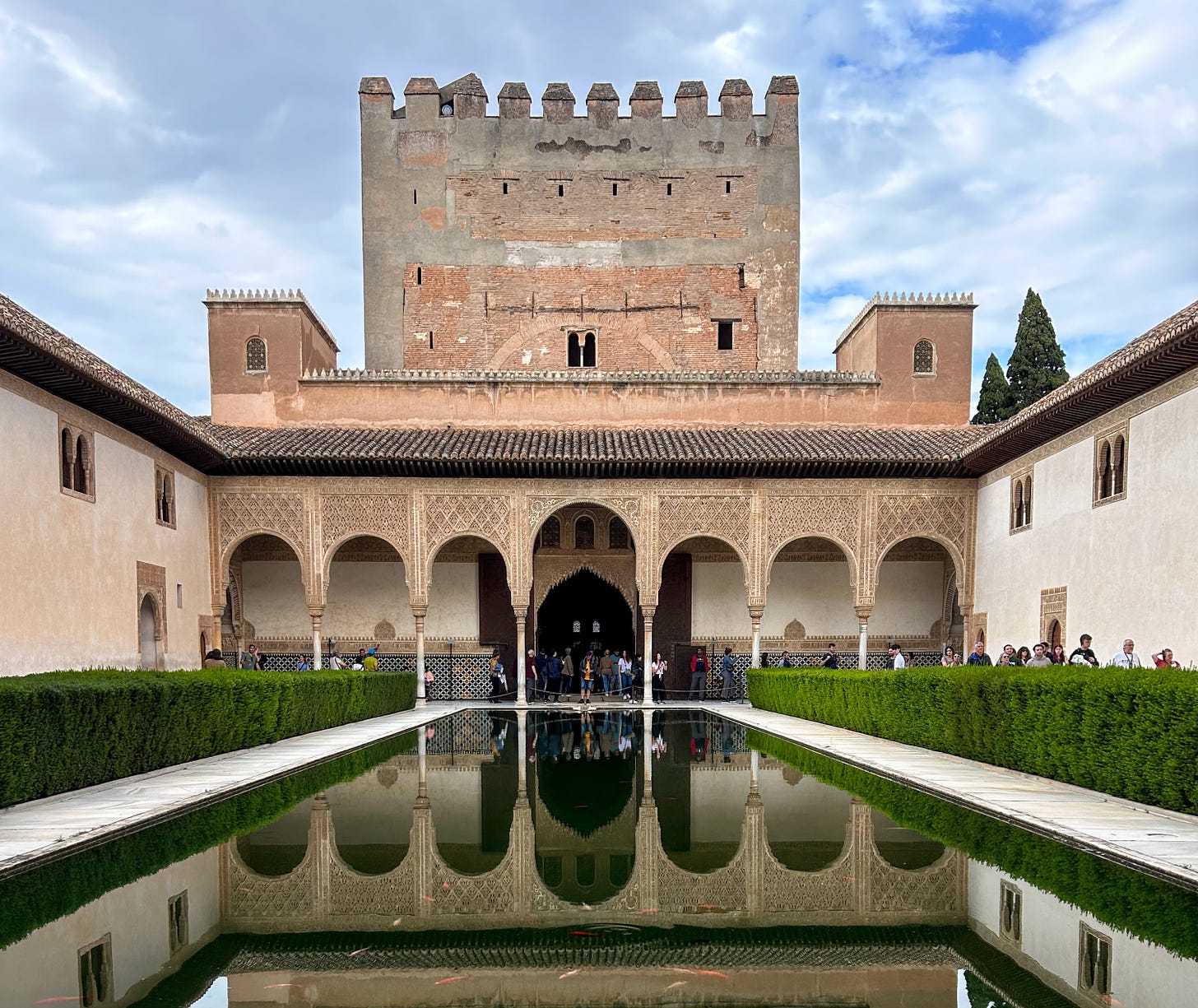
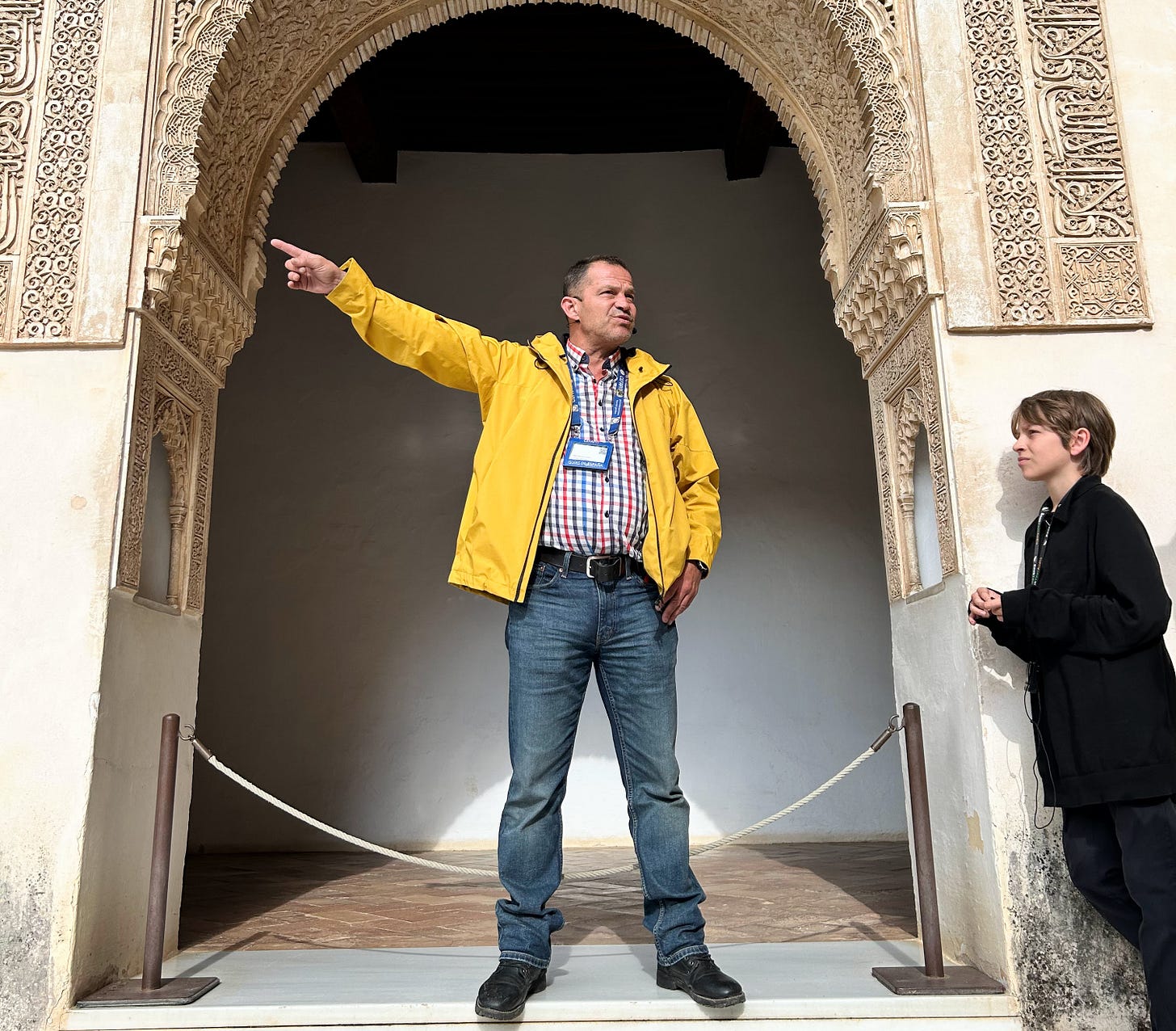
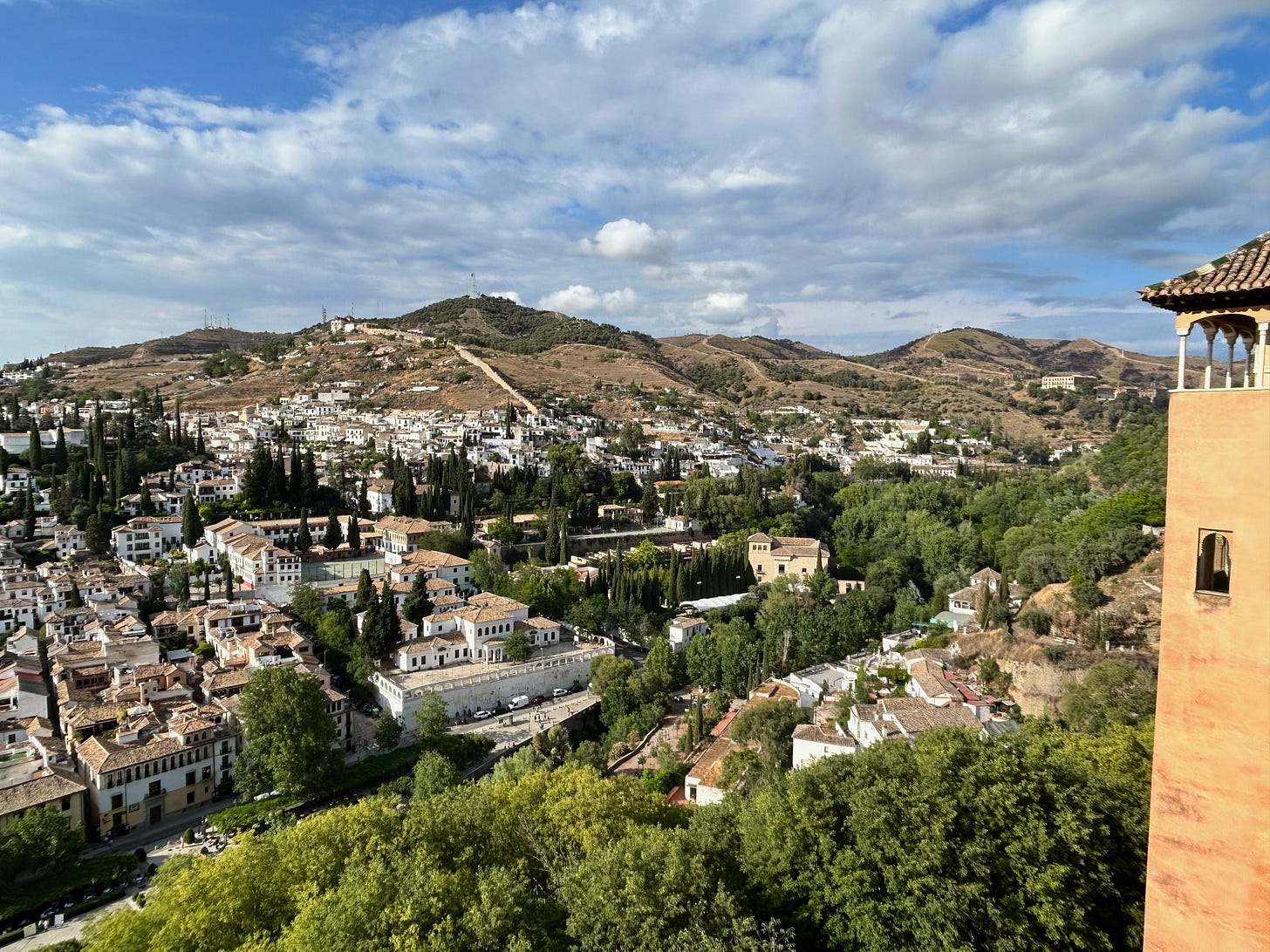
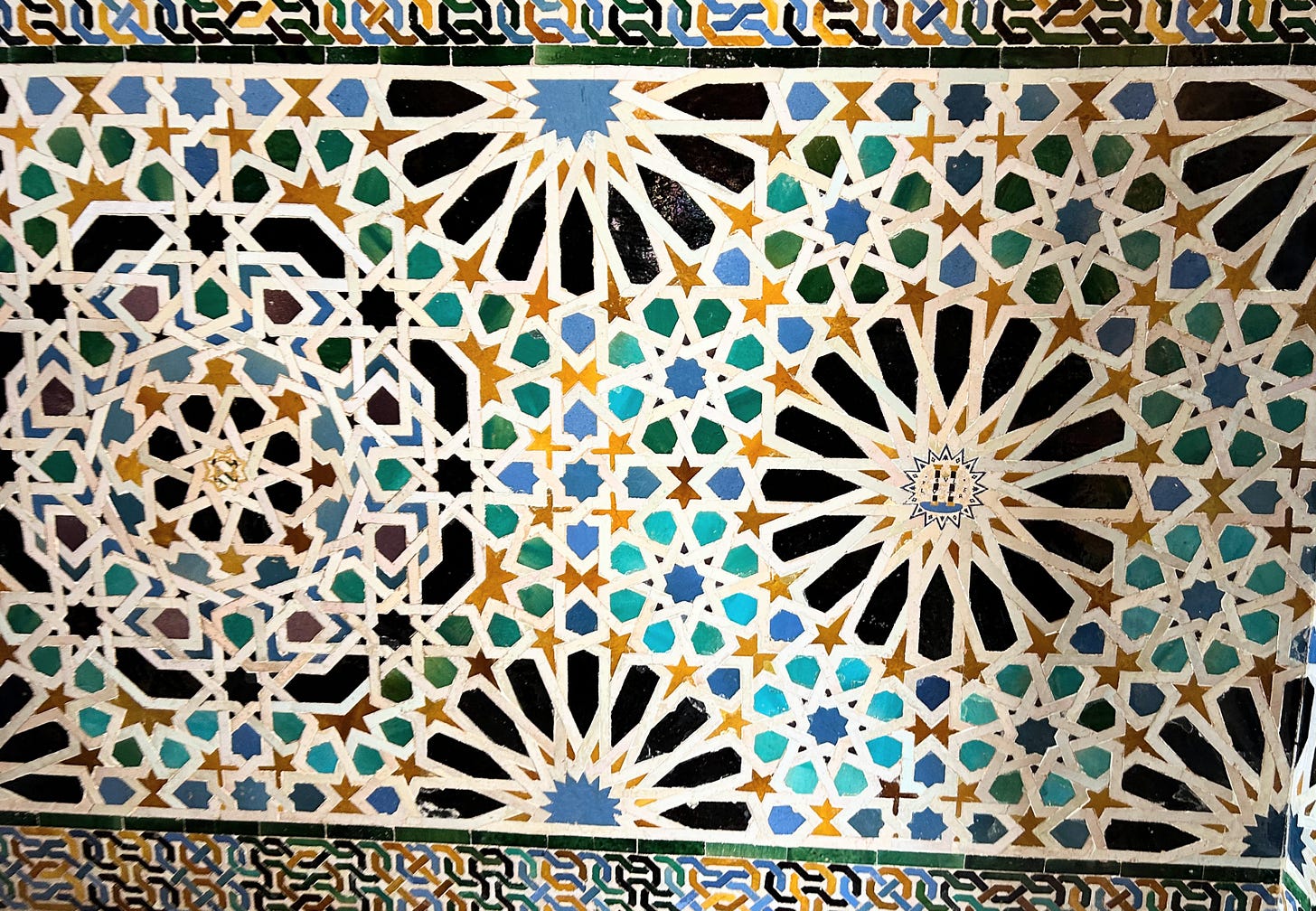
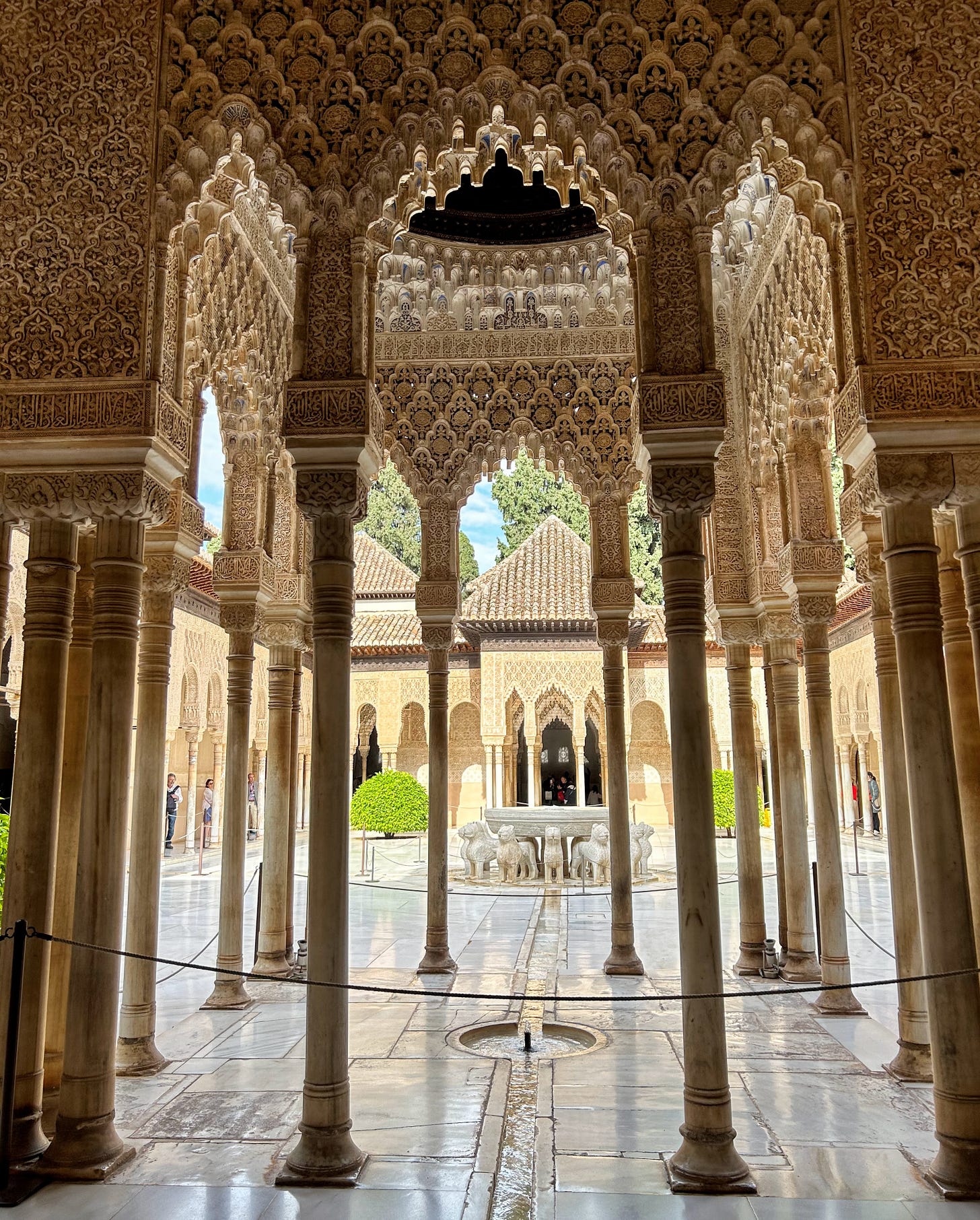
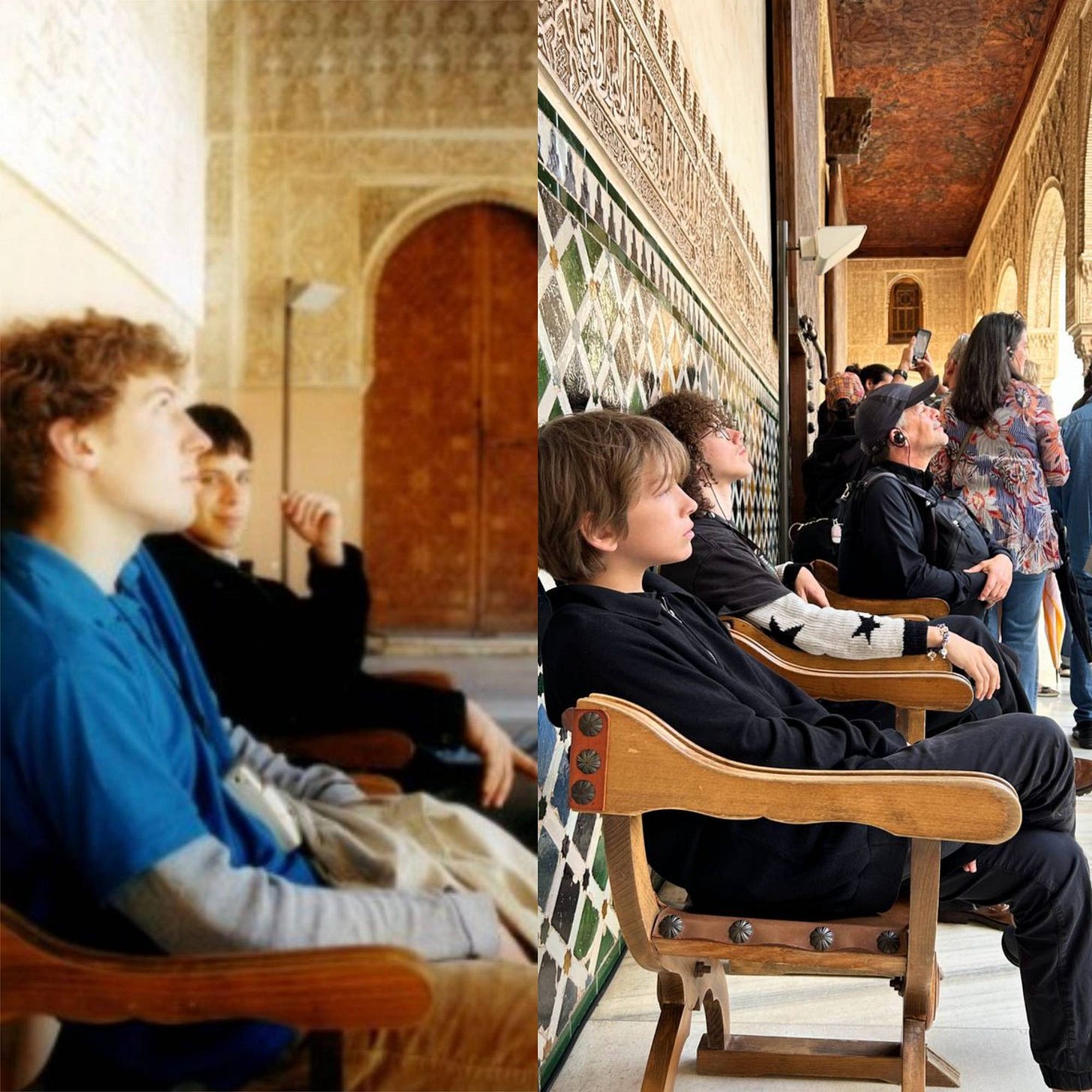
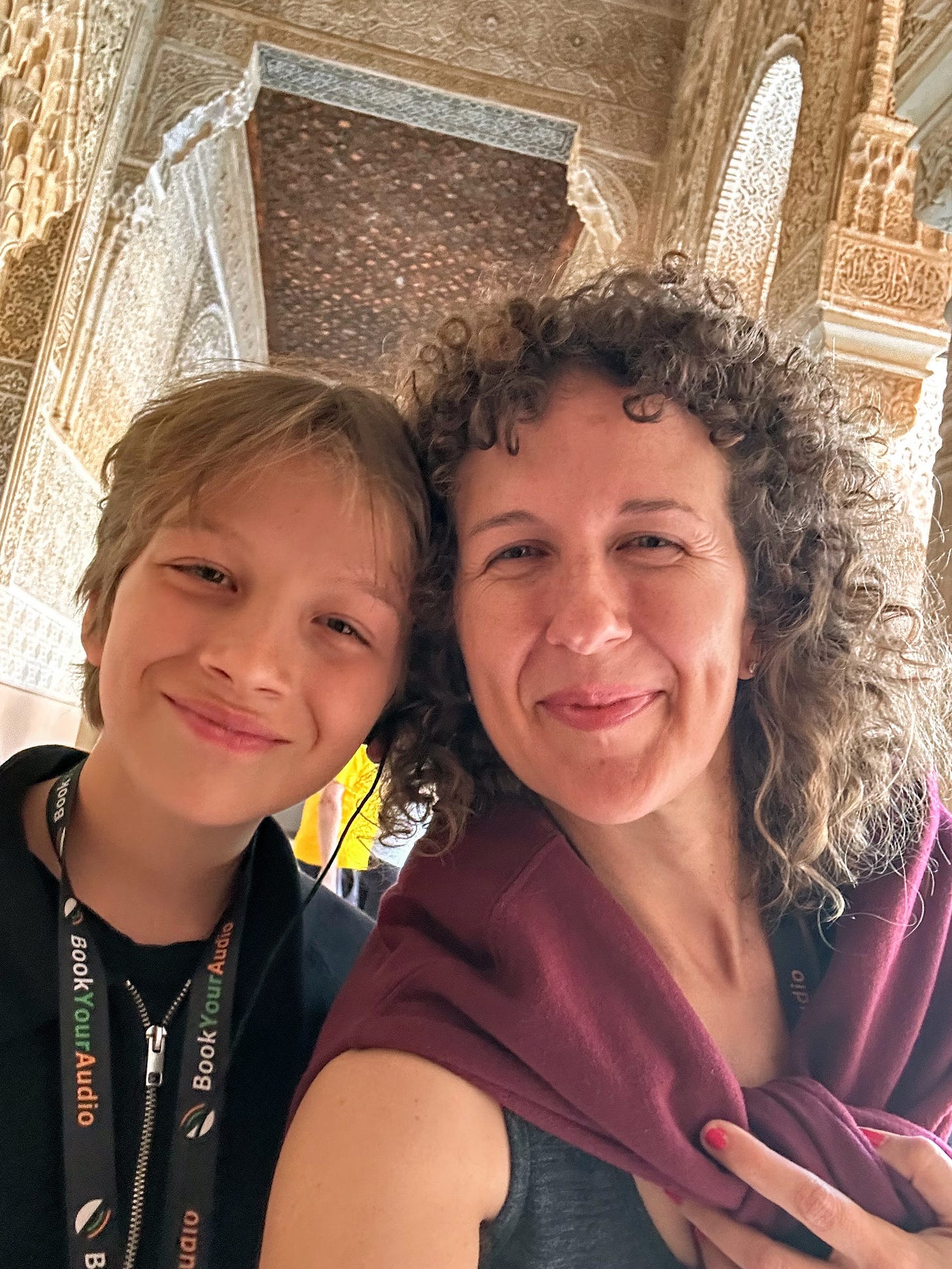
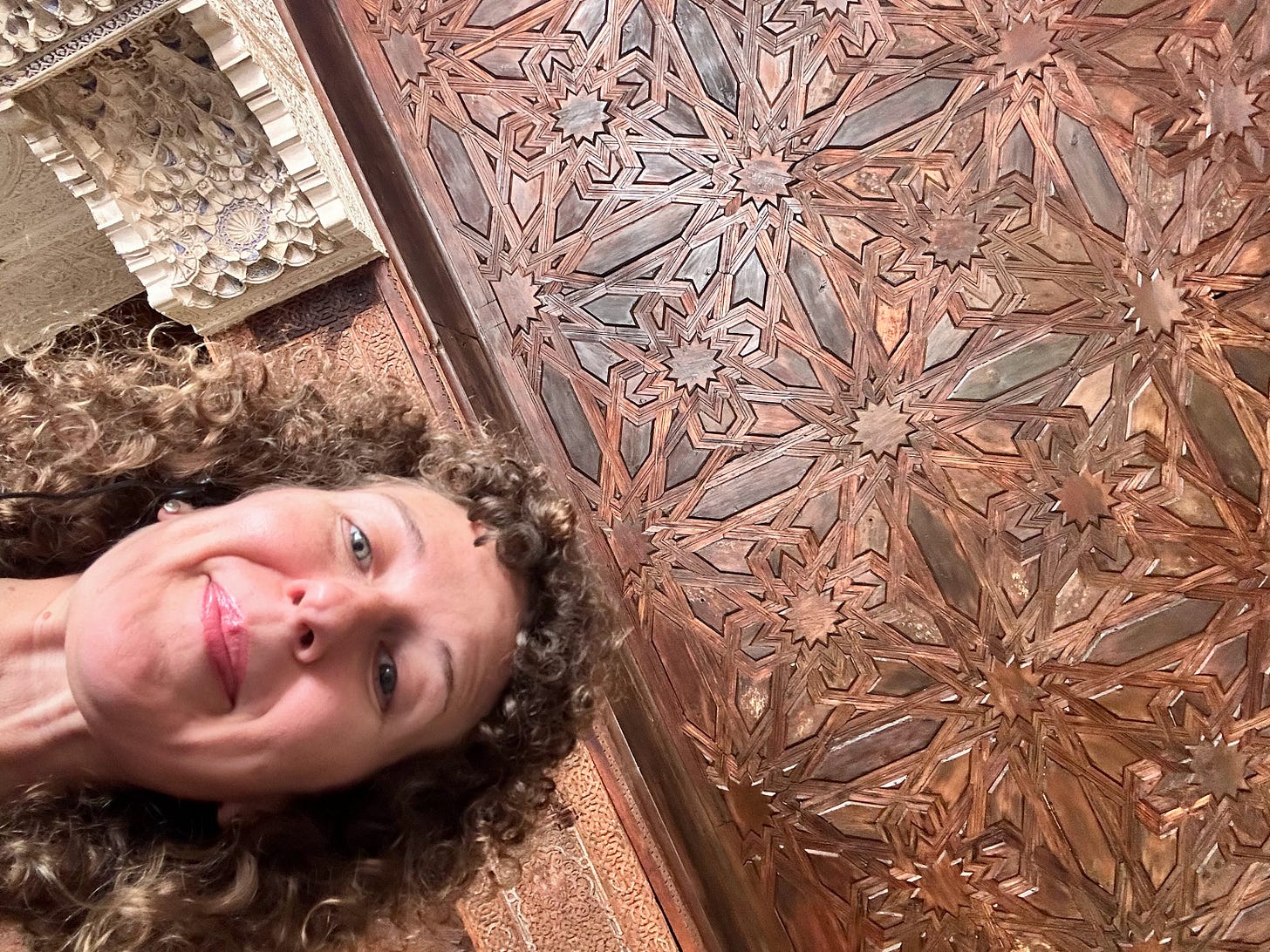
Beautiful post in many ways. I’m so glad you got the tour guide you did!
A beautiful circuitous experience for you!